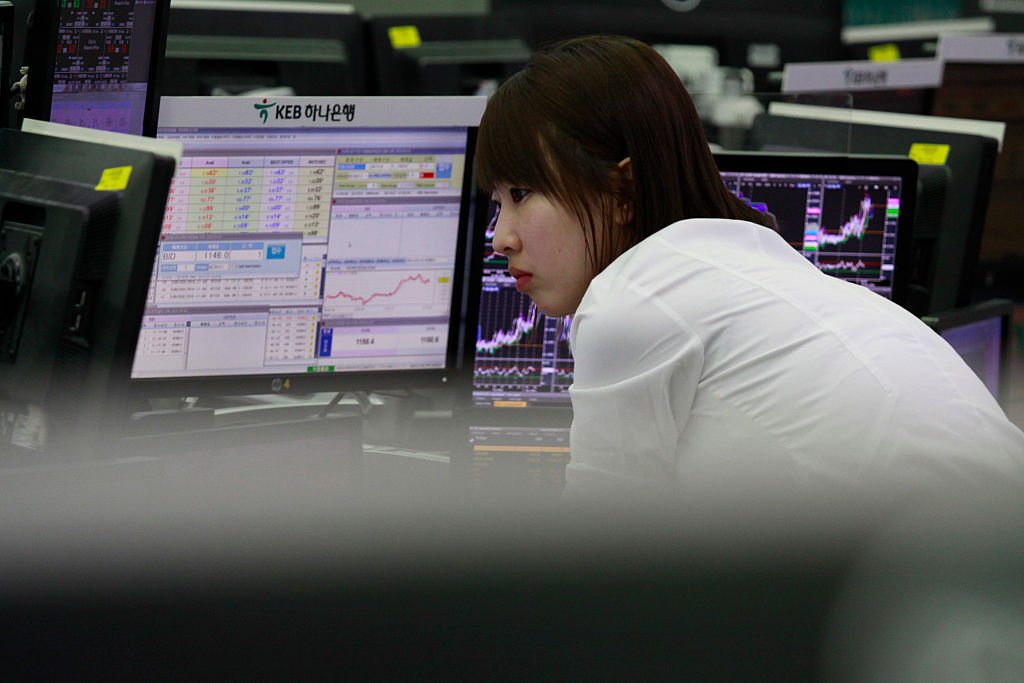Japan’s economy fell faster than expected in the first quarter as the weak yen continued to batter consumers, throwing a fresh challenge to the central bank’s push to get interest rates further away from near zero.
Preliminary gross domestic product (GDP) data from the Cabinet Office on Thursday showed Japan’s economy shrank 2.0% annualised in January-March from the prior quarter, faster than the 1.5% drop seen in a Reuters poll of economists.
Downwardly revised data showed GDP barely grew in the fourth quarter of 2023, due to downgrades to capital expenditure estimates.
While preliminary capital spending data is often subject to heavy revisions in the final release, the across-the-board declines in all GDP components suggest Japan’s economy had no major growth engine in the first quarter.
That could create some hesitation for the Bank of Japan, which raised interest rates in March for the first time since 2007 and has since signalled its intention to continue tightening policy.
“It would be possible that the timing of rate hikes could be pushed back depending on how the GDP may rebound in the current quarter,” said Yoshimasa Maruyama, chief market economist at SMBC Nikko Securities.
He said while the economy would certainly rebound in the current quarter due to rising wages, uncertainty remains around consumption in the service sector.
The latest GDP reading translates into a quarterly contraction of 0.5%, versus a 0.4% decline expected by economists. Revised first quarter figures will be released on June 10.
The weak yen has created a two-speed economy in Japan, with the export and tourism sectors broadly benefiting from a more competitive exchange rate but households and small businesses squeezed by inflated costs of imported goods.
Toru Suehiro, chief economist at Daiwa Securities, said the yen’s weakness complicates the question of whether the BOJ should maintain its monetary stimulus or continue to unwind it.
“The adverse effects of a weaker yen are becoming a cause for concern so one can argue that interest rates should be raised,” Suehiro said.
“Although real wages are likely to turn slightly positive in the second half of this year, the level of real wages will not rise sharply as the yen continues to weaken.”
REAL WAGE PAIN
Japan’s large businesses delivered the biggest wage hikes in three decades this year, which the BOJ says provided the conditions needed to finally end decades of radical monetary stimulus.
However, thrifty households have since tightened their purse strings as price hikes outpaced wage gains, squeezing real incomes and diminishing their purchasing power.
Private consumption, which accounts for more than half of the Japanese economy, fell 0.7%, bigger than the forecast 0.2% drop. It was the fourth straight quarter of decline, the longest streak since 2009.
Economists are hopeful the first quarter weakness will prove temporary and expect the drag to growth from an earthquake in the Noto area this year and the suspension of operations at Toyota’s unit to dissipate.
Still, sharp yen declines persist as a threat to the recovery as do spikes in crude oil due to the Middle East crisis.
Capital spending, a key driver of private demand, fell 0.8% in the first quarter, versus an expected decline of 0.7%, despite hefty corporate earnings.
External demand, or exports minus imports, knocked 0.3 of a percentage point off first quarter GDP estimates.
For now, policymakers are counting on the bumper pay hikes and planned income tax cuts to spur flagging consumption and prevent a shift back to deflation.
“Rate hikes or cuts in bond purchases can ease the pain of yen weakening, which could pave the way for income gains to spill over to consumption,” said Maruyama. “If that doesn’t happen, raising rates would be difficult, particularly when consumption remains weak.”
(Reuters)




















